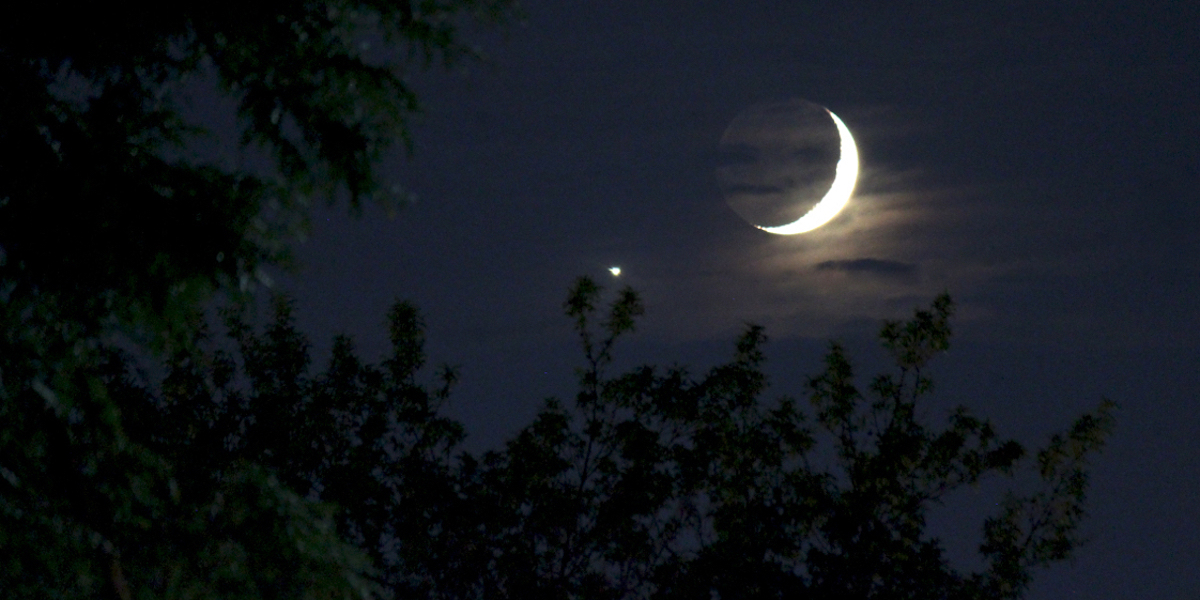The '20s kick off with plenty to enjoy for fans of the night skies, says a University of Alberta astrophysicist.
"2020 is a good year to view some of the planets after dark, since they'll be so bright that people won't need telescopes or binoculars to enjoy them," said Sharon Morsink, director of the U of A's Astronomical Observatory.
- RELATED: Connecting kids with the wonders of astronomy
- RELATED: How to enjoy Alberta's summer skies-day and night
Venus, Jupiter and Saturn are especially visible from Earth this year, and keen skywatchers can track how they change as they move across the sky over the months, said Morsink, adding that the observatory will have viewing hours throughout the year.
"These worlds are really close to us, and it's exciting to know that you can see their locations changing every night."
Here's what to watch for as you turn your eyes to the skies in 2020.
January to May
Venus, known as the evening star, is the second planet from the sun, which means it glows with the sun's reflected rays. For the first part of the year, it's so bright in the west that it's easily visible for a short time after sunset.
"That can make for beautiful photos-especially when the moon is also up. It's a lovely pairing," Morsink noted.
With the help of a telescope, the phases of Venus can be viewed throughout the first five months of the year, from being partly illuminated in January to becoming a slender crescent by May as the planet passes between Earth and the sun.
"It's a transformation day by day, and we'll be seeing what Galileo saw in the 1600s, when he discovered that Venus orbits the sun and not the Earth, as was thought. We call it a Galileo moment," Morsink said.
June to August
Though summer skies stay light too long to see much at night, in 2020 the sun starts to emerge from a years-long cycle of low solar activity, which means more sunspots will start to show up, with the best viewing slowly ramping up to 2025. These dark spaces on the colder areas of the sun's surface change constantly, making for an interesting view.
"They can look quite different from day to day," said Morsink.
Ever-changing loops of gas around the sun, known as prominences, can also be seen through a telescope with a solar filter.
"On a good viewing day, they look a bit like hair coming off the sun."
After dark, keep an eye out for Perseid meteor showers winking across the night sky Aug. 11, 12 and 13, though a three-quarter moon will somewhat dim the view. However, the warm weather makes it a light show perfect for family viewing through special events like one hosted by the U of A Botanic Garden, Morsink suggested.
Sometimes dubbed as falling stars, meteor showers are the result of dust grains left behind by comets. The dust particles collide with Earth's atmosphere, where they get hot and glow.
"We see them as a streak of light that moves through the sky," explained Morsink.
September to December
It's a good year for Mars, Jupiter and Saturn, all easily visible at night without a telescope during late fall. Over the fall and winter months, the planets will vary in brightness, giving everyone a chance to appreciate their beauty and place in the heavens, Morsink said.
"When we see these planets making their line in the sky, that's showing us the plane of the solar system, which is the pathway we are all travelling on as we orbit the sun."
Just after sunset Dec. 21, Saturn and Jupiter put on a special show by appearing to sit closer together than they have since 1623, though they were in close conjunction in 2000, Morsink said.
"They'll look like they're practically touching, and it will be easy to compare how bright they are, even with binoculars. Jupiter is larger and closer to Earth, so it will be easy for us to see that difference."
Darker, later mornings mean fans of Venus will again get to enjoy its luminous beauty without losing sleep, this time in the eastern sky before dawn. After starting the year in crescent form, it will be in its full glory at the close of 2020.
